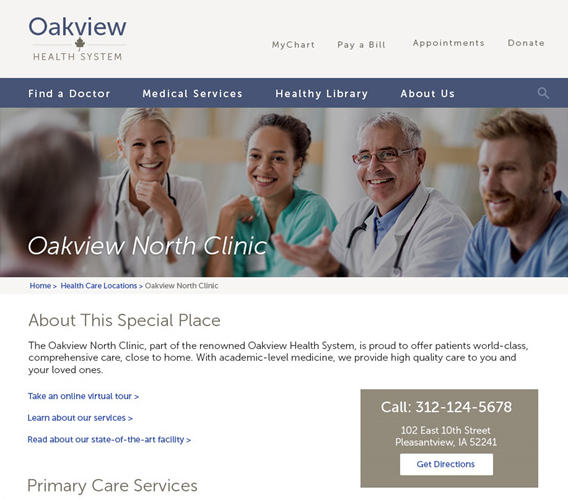In this blog series, we explore experience design for the patient and member journey.
Strategy to Improve Digital Experiences in Healthcare
Patient- and Member-Centered Content and Experience Design
A hallmark of poorly-considered healthcare content is the tendency to create definition-based pages in isolation of one another.
Before you write a word, make sure you understand a) the end goal, b) the various ways one might achieve that goal, and the c) specific audiences you’re working to affect.
RELATED: How to Better Understand Your Patients and Members
Strong content begins with the following considerations:
- Motivation – Why are they here and what will prompt them to act?
- Intent – What is the most likely next step?
- Urgency – If the next step is inevitable, how quickly would this person want/need to act?
- Readiness – If the next step is optional, what stage in the behavioral change process should the content reflect?
- Emotional State – Which words will make them feel comforted, understood, etc.?
Tips for a Better Website Experience
When a user lands on your site, make sure they can find their bearings. Use words they expect and understand, and articulate their needs in clear, concise language, infusing the terms they’re looking for.
Content that connects is scannable. Use an appropriate structure, including subheadings, bullets, columns, and page functions such as accordions or tabs to reduce cognitive overload and to guide visitors directly to the content they need.
Any visuals on the page, such as graphics or video, should be directly relevant and meaningful. Avoid overly staged or inauthentic stock art whenever possible. Use your own photos when you can, or create infographics to convey information in a visual way.
Avoid buzzwords and clichés. While it’s important to be “multidisciplinary,” “world-class,” and “on the cutting-edge,” don’t simply drop these terms and expect people to understand or care. Show them what they don’t know about you through facts, data, and stories. Share stories and information only your organization can share.
SEE ALSO: The Top SEO Challenges in Healthcare

Sample page with too many buzzwords
Remember, an SEM campaign is a journey too. These campaigns are financial investments, so there should be even more motivation to get it right. The content you create in your campaign should match user intent through the whole journey. Use the right terms and imagery in your ad text and carry that approach all the way to the landing page and conversion.
YOU MAY ALSO ENJOY: Success Story: Building Patient Relationships Through Integrated Engagement
In summary:
- Fully understand your audiences’ emotional needs before you write
- Use clear, concise, and simple language
- Add meaningful imagery and graphics
- Lose the buzzwords and clichés (world-class, state-of-the-art, “best in the region”)
- Show, don’t tell. Let them decide you’re “world class” based on your stories that highlight the patient experience
NEXT: Kaizen Evolution of Your Healthcare Website
Consumers Expect More From Their Healthcare Experiences
We help leading healthcare organizations confidently navigate regulatory requirements and trends spurring consumer-centered transformations. Learn more about our solutions to better reach and engage healthcare consumers, and contact us to discuss your specific needs.

